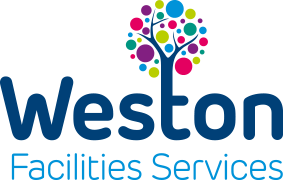Weston Facilities Services will work with you to ensure the key aspects of an Asset Management Strategy are embedded in how we work with you and manage your facilities on your behalf.
BSI PAS 55:2008 (since overtaken by ISO 55000/1/2) contains a useful glossary of key terms in Asset Management.
Asset(s)
Plant, machinery, property, buildings, vehicles and other items that have a distinct value to the organization
Asset management
Systematic and coordinated activities and practices through which an organization optimally and sustainably manages its assets and asset systems, their associated performance, risks and expenditures over their life cycles for the purpose of achieving its organizational strategic plan
Asset management information
Meaningful data relating to assets and asset management
NOTE Examples of asset management information include asset registers, drawings, contracts, licences, legal, regulatory and statutory documents, policies, standards, guidance notes, technical instructions, procedures, operating criteria, asset performance and condition data, or all asset management records.
Asset management objective(s)
Specific and measurable outcome or achievement required of asset system(s) in order to implement the asset management policy and asset management strategy; and/or detailed and measurable level of performance or condition required of the assets; and/or specific and measurable outcome or achievement required of the asset management system.
Asset management plan
Document specifying activities and resources, responsibilities and timescales for implementing the asset management strategy and delivering the asset management objectives.
Asset management policy
Principles and mandated requirements derived from, and consistent with, the organizational strategic plan, providing a framework for the development and implementation of the asset management strategy and the setting of the asset management objectives.
Asset management strategy
Long-term optimized approach to management of the assets, derived from, and consistent with, the organizational strategic plan and the asset management policy
NOTE 1 The asset management strategy converts the objectives of the organizational strategic plan and the asset management policy into a high-level, long-term action plan for the assets and/or asset system(s), the asset portfolios and/or the asset management system.
NOTE 2 The high-level, long-term action plans for the assets and the asset management objectives are normally the outputs of the asset management strategy. These elements together form the basis for developing more specific and detailed asset management plan(s).
Asset management system
An organization’s asset management policy, asset management strategy, asset management objectives, asset management plan(s) and the activities, processes and organizational structures necessary for their development, implementation and continual improvement.
Asset portfolio
Complete range of assets and asset systems owned by an organization.
Asset system
Set of assets that interact and/or are interrelated so as to deliver a required business function or service.
Enablers (asset management)
Supportive systems, procedures, processes, activities and resources that enable an organization to operate its asset management system efficiently and effectively.
Functional policy
Specified approach, rules and boundaries set out by an organization, that provide direction and the framework for the control of specific asset-related processes and activities
NOTE Functional policies, strategies and objectives relate to asset management activities or processes, such as capital investment, construction methods, maintenance and purchasing, These should not be confused with asset management policies, asset management strategy and asset management objectives, which are cross-functional, considering the life cycle optimization of all relevant activities.
Life cycle
Time interval that commences with the identification of the need for an asset and terminates with the decommissioning of the asset or any associated liabilities.
Optimize
Achieve by a quantitative or qualitative method, as appropriate, the best value compromise between conflicting factors such as performance, costs and retained risk within any non-negotiable constraints
Organization
Company, corporation, firm, enterprise, authority or institution, or part or combination thereof, whether incorporated or not, public or private, that has its own functions and administration
Organizational strategic plan
Overall long-term plan for the organization that is derived from, and embodies, its vision, mission, values, business policies, stakeholder requirements, objectives and the management of its risks
Sustainable
Achieving or retaining an optimum compromise between performance, costs and risks over the life cycle, whilst avoiding adverse long-term impacts to the organization from short-term decisions

